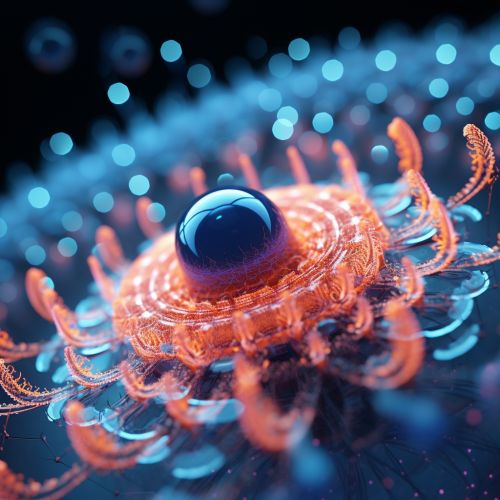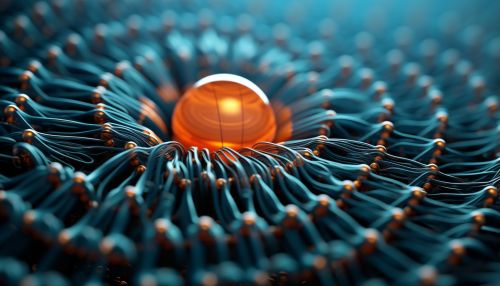Cell-inspired Actuators
Introduction
Cell-inspired actuators are a category of actuators that mimic the biological functions of cells to perform mechanical tasks. These actuators are often used in the field of Micro- and Nano- Electromechanical Systems (MEMS/NEMS) and soft robotics, where they can provide precise control at a microscopic scale.


Biological Inspiration
The design of cell-inspired actuators is based on the principles of cell biology. Cells, the basic building blocks of life, have the ability to change shape, move, and perform work, all of which are characteristics that can be beneficial in an actuator. In particular, the actin-myosin motor system found in muscle cells is often used as a model for cell-inspired actuators.
Design and Fabrication
The design and fabrication of cell-inspired actuators often involve the use of biomaterials and nanotechnology. These materials can be engineered to respond to specific stimuli, such as changes in temperature, pH, or electric field, in a manner similar to biological cells. The fabrication process typically involves techniques such as microfabrication and nanofabrication, which allow for the creation of structures at the micro- and nano-scale.
Types of Cell-Inspired Actuators
There are several types of cell-inspired actuators, each with their own unique characteristics and applications.
Biohybrid Actuators
Biohybrid actuators combine biological components, such as cells or proteins, with synthetic materials. This allows for the creation of actuators that can mimic the behavior of biological cells, while also providing the durability and stability of synthetic materials.
Soft Robotic Actuators
Soft robotic actuators are designed to mimic the flexibility and adaptability of biological cells. These actuators are often made from elastomers or other soft materials, and can be used in applications where flexibility and adaptability are key, such as in prosthetics or biomedical engineering.
Micro- and Nano-Actuators
Micro- and nano-actuators are designed to operate at the micro- and nano-scale, similar to biological cells. These actuators can be used in applications such as drug delivery, where precise control at a microscopic scale is required.
Applications
Cell-inspired actuators have a wide range of applications, from biomedical engineering to robotics.
In the field of biomedical engineering, these actuators can be used in drug delivery systems, where they can provide precise control over the release of drugs. They can also be used in the development of prosthetics, where they can mimic the flexibility and adaptability of biological cells.
In robotics, cell-inspired actuators can be used in the development of soft robots, which are designed to mimic the flexibility and adaptability of biological organisms. These robots can be used in a variety of applications, from search and rescue operations to healthcare.
Future Directions
The field of cell-inspired actuators is still in its early stages, and there is much potential for future research and development. Potential areas of focus include the development of new materials and fabrication techniques, the integration of cell-inspired actuators with other technologies, and the exploration of new applications.
